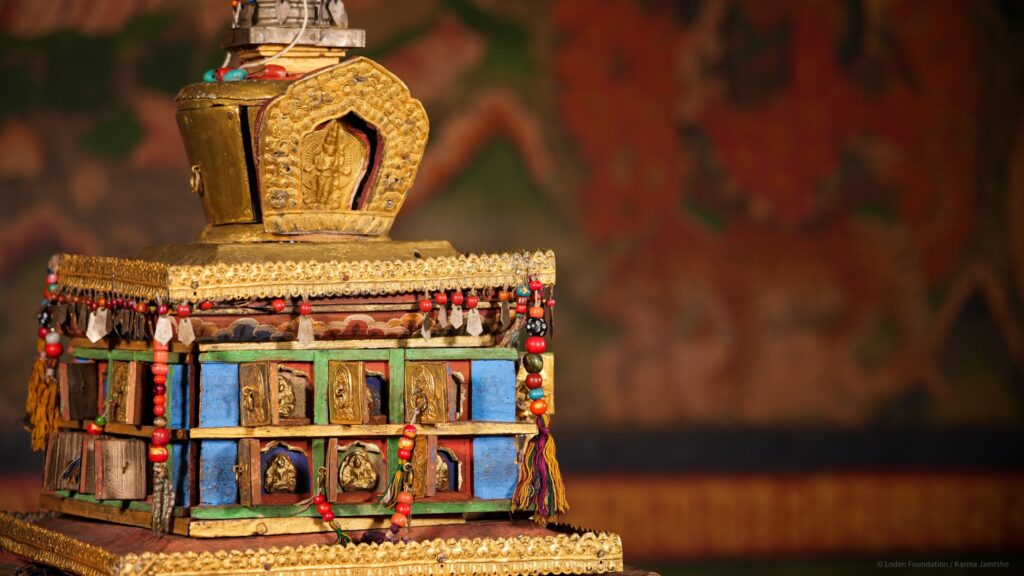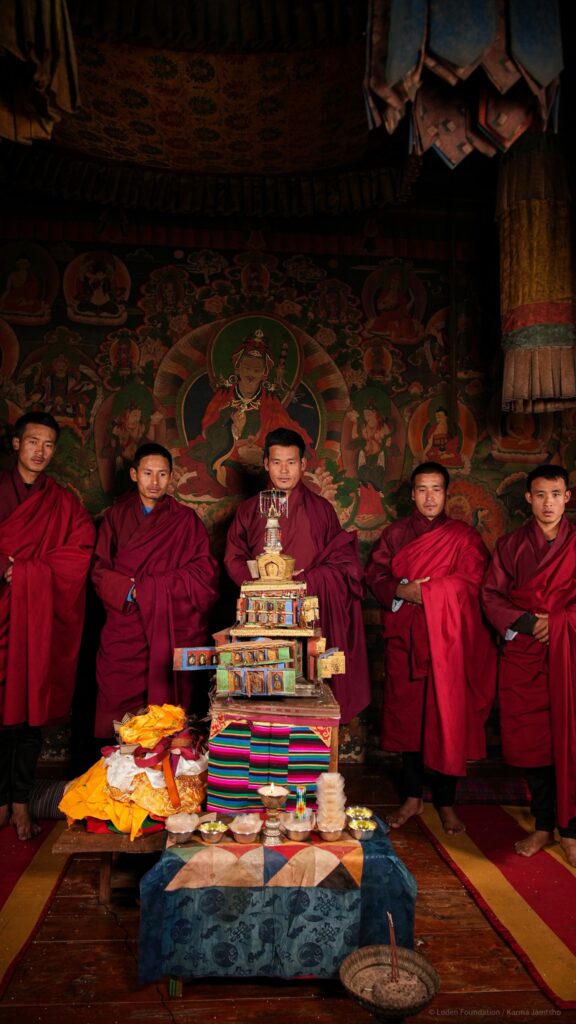Did You Know?
The Tashigomang is one of eight types of choetens or stupas. The three popular ones in Tibet connected to the Drukpa school of Buddhism are the 15th century Gyantse Kumbum, Kumbum stupa of Ralung which no longer exists and the 12th century choeten in Densatil monastery. It will be interesting to note
that the fourth Desi, Gyalsey Tenzin Rabgye (1638-1696) tried to build a replica of the great Kumbum of Gyantse near Punakha Dzong. Credited for formalising the Zorig Chusum, it is said that the Desi sent some Nyingmapa agents to Tibet in 1691 in order to prepare sketches and measurements.

However, he could not start the grandiose project. The idea of miniaturizing the Tashigomang choeten and making it mobile exists only in Bhutan now. The idea of mobile shrines, miniature altars and travelling
monks exists in other cultures and countries. For example, in Ladakh and Tibet, similar quasi-monks but known as Manips walk from village to village. The only difference is that instead of Tashigomangs they
carry thangkas or painted scrolls and explain the images to the devotees.
Similarly in the desert of Rajasthan, the Kaavadiya Bhat or story-tellers walk the expanse singing devotional hymns while displaying their portable altars. The Kaavad of Rajasthan bear the closest resemblance to the Tashigomangs of Bhutan. Few miniature shrines exist in Bhutan. The most sacred one was built by Kuenga Gyeltshen (1874-1940) also known as Tsham Go Seb and is kept in his altar at Kuengacholing monastery in Paro. Like most traditions based on the Drukpa Kagyu school of Buddhism, the tradition of Tashigomang is also based on ‘whisper’ (snyan) transmission. There have been some papers written on the subject but two were written as catalogues for exhibitions held outside the
country.
The Structure

Tashigomang literally means auspicious multiple doors. The salient feature of the box of prayers is the multiple doors. The Lam Manips open each door with the recital of the mani. Each door is richly decorated with carvings and holds a surprise behind it. Some of the intricate ones have as many as 108 doors. Depending on the style of the craft each side will have many miniature doors. Behind each door there is a miniature clay tsa tsa or molded image of a Buddhist figure fixed against the back panel. It is said that the multiple doors signify that the teachings of the Buddha. will spread far and wide.
While detailed study is still underway, preliminary study suggests that the structures are generally built in the mandala style. Irrespective of the type, all of them are multi-tiered and have a lotus on the top with a
miniature statue of the Guru in the middle of the flower. Most have four distinct and projected sides with a compartment in the center. The main structure is almost always built out of wood, cypress being the
preferred choice. Like in traditional architecture, no nails can be found. Master carpenters build the frame without any blueprints, architectural or structural drawings. The portable temple epitomizes the 13 traditional arts and crafts of the country.
Each structure comes with wooden box that is multi-functional. The box not only protects the structure but also makes it portable. On top of the box there is a short metal rod fixed to a wooden base. The
Tashigomang is fitted onto this and the box is used as an altar table. The miniature temples weigh upwards of 20kgs. When the Manip packs up the Tashigomang after use, he spins it round on this base while wrapping it in layers of silk and woven cloth and then securing it tightly with many woven belts.

